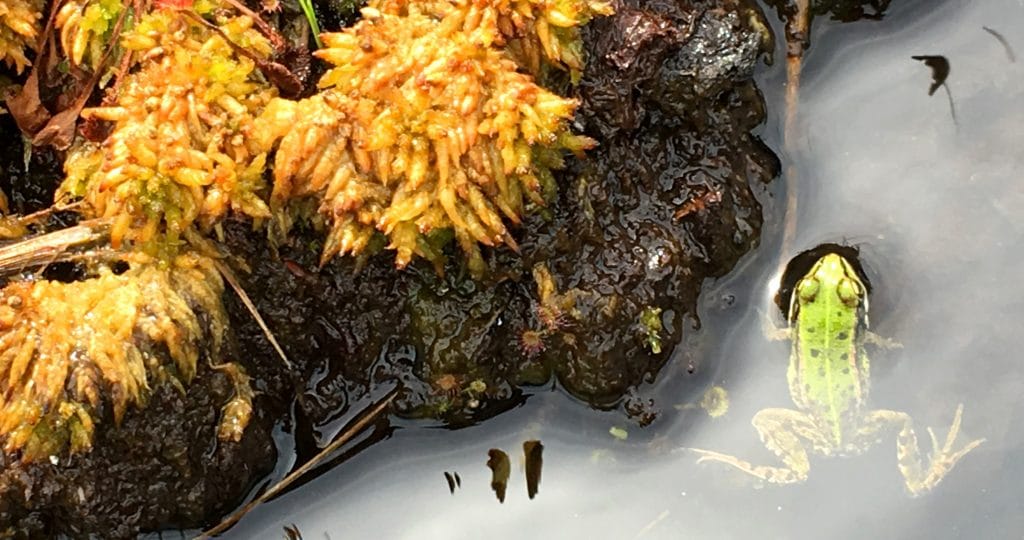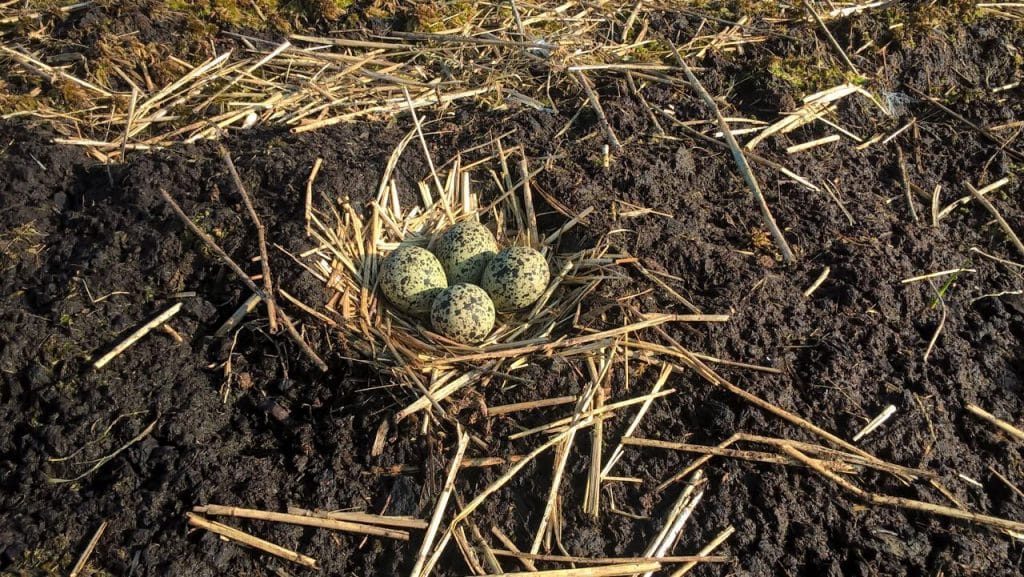Biodiversity on peat moss sites – part 2
Lapwing discovered on former peat extraction area
A lapwing has settled to breed on one of Klasmann-Deilmann’s peat moss sites. This bird is an at-risk species in Germany. In recent years, in an extensive scientific project, we have trialled Sphagnum farming in two former peat extraction areas. These sites now provide a habitat for threatened flora and fauna. In this two-part report, you can find out which animal and plant species have become established there.
The cultivation of peat moss (Sphagnum farming) represents the only sustainable form of post-extraction land-use for commercial peatfields. In conjunction with the Braunschweig-based Thünen Institute and the Institute of Environmental Planning (IUP) at Leibniz University Hannover, we are investigating whether Sphagnum farming can be a win-win solution in terms of biodiversity, climate and economic aspects. Research outcomes to date support the proposition that climate and nature conservation goals can be achieved far quicker by means of peat moss cultivation than, for example, by conventional re-wetting. These new findings should be factored into a rethinking of current practice regarding peatland restoration, and creation of an appropriate regulatory and financial framework.
Doctoral student Lotta Zoch has been carrying out extensive monitoring of our sites since March 2017: she is surveying birds, reptiles, amphibians, dragonflies and butterflies, as well as all the invertebrates – such as spiders, beetles and bugs – that live in the uppermost peat layer. Amanda Grobe, also a doctoral researcher, is surveying the flora. Read more about this in part 1 of our report.
Of the bird species that Lotta Zoch identified on our peat moss sites in the past year, 10 were on the Red List of threatened species for Lower Saxony and Bremen. Among them is the lapwing. This bird settled to breed on one of the sites and laid four eggs in its nest on the ground. It usually takes 26 to 29 days until the chicks emerge. The bird already had a nest there last year and its young hatched successfully. Doctoral student Zoch says: “The fact that lapwings have bred successfully at the Provinzialmoor site shows that Sphagnum farming could be important for ground breeders in particular.”
The lapwing is around 30 cm in length, about the size of a pigeon. Its most striking feature is the prominent feathered crest on the back of its head. Another useful identifying field mark is its glossy, metallic green upper plumage.
The lapwing’s preferred habitat is wet grassland – one that is in continuous decline in Germany due to agricultural intensification. Today, this bird is a rare sight, with the population having been halved over the last 20 years. The lapwing is now on the international Red List of at-risk birds. Germany’s Association for Nature Conservation (NABU) has warned that the lapwing will become extinct as a breeding bird in some regions if no further action is taken. It remains to be hoped that this particular lapwing – and its offspring – will continue to call our peat moss sites home.
The interim findings after two years of research already clearly indicate the unique contribution that Sphagnum farming can make to both nature conservation and climate protection in raised-bog areas. We therefore feel the federal state of Lower Saxony must act to adapt its existing guidelines on peatland restoration to take into account of this new scientific evidence. We can, with our more than 3,000 hectares of land that has either already been re-wetted or for which restoration is planned, potentially provide substantial benefits on both conservation and climate fronts. For this to happen, the right policy choices need to be made, and this includes financial requirements.
In the first part of our report, you can find out how many red-listed plant species doctoral student Amanda Grobe has identified on our peat moss sites.

